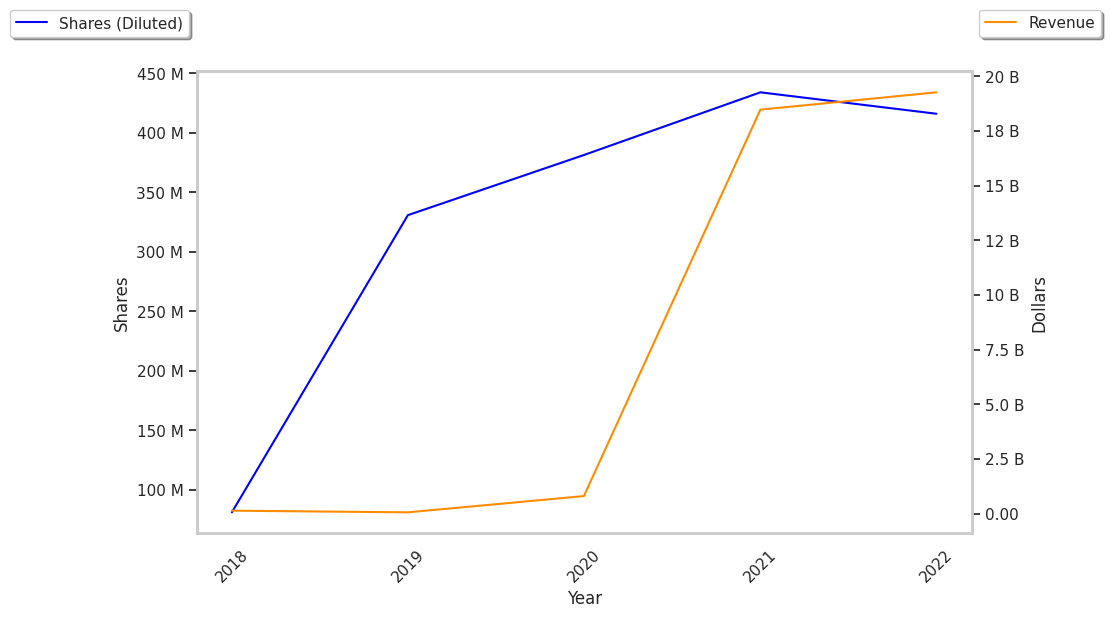Standing out among the Street's worst performers today is Moderna, a biotechnology company whose shares slumped -21.3% to a price of $33.27, 54.82% below its average analyst target price of $73.64.
The average analyst rating for the stock is hold. MRNA lagged the S&P 500 index by -20.0% so far today and by -80.9% over the last year, returning -58.6%.
Moderna, Inc., a biotechnology company, discovers, develops, and commercializes messenger RNA therapeutics and vaccines for the treatment of infectious diseases, immuno-oncology, rare diseases, autoimmune, and cardiovascular diseases in the United States, Europe, and internationally. The company is part of the healthcare sector. Healthcare companies work in incredibly complex markets, and their valuations can change in an instant based on a denied drug approval, a research and development breakthrough at a competitor, or a new government regulation. In the longer term, healthcare companies are affected by factors as varied as demographics and epidemiology. Investors who want to understand the healthcare market should be prepared for deep dives into a wide range of topics.
Moderna does not publish either its forward or trailing P/E ratios because their values are negative -- meaning that each share of stock represents a net earnings loss. But we can calculate these P/E ratios anyways using the stocks forward and trailing (EPS) values of $-8.7 and $-5.81. We can see that MRNA has a forward P/E ratio of -3.8 and a trailing P/E ratio of -5.7. The P/E ratio is the company's share price divided by its earnings per share. In other words, it represents how much investors are willing to spend for each dollar of the company's earnings (revenues minus the cost of goods sold, taxes, and overhead). As of the third quarter of 2024, the health care sector has an average P/E ratio of 26.07, and the average for the S&P 500 is 29.3.
To deepen our understanding of the company's finances, we should study the effect of its depreciation and capital expenditures on the company's bottom line. We can see the effect of these additional factors in Moderna's free cash flow, which was $-3825000000 as of its most recent annual report. Free cash flow represents the amount of money available for reinvestment in the business or for payments to equity investors in the form of a dividend. In MRNA's case the cash flow outlook is weak. It's average cash flow over the last 4 years has been $2.52 Billion and they've been growing at an average rate of -54.3%.
Value investors often analyze stocks through the lens of its Price to Book (P/B) Ratio (its share price divided by its book value). The book value refers to the present value of the company if the company were to sell off all of its assets and pay all of its debts today - a number whose value may differ significantly depending on the accounting method. Moderna's P/B ratio indicates that the market value of the company exceeds its book value by a factor of 1.07, but is still below the average P/B ratio of the Health Care sector, which stood at 3.53 as of the third quarter of 2024.
Since it has a negative P/E ratio., a lower P/B ratio than its sector average, and positive cash flows with a downwards trend, Moderna is likely overvalued at today's prices. The company has poor growth indicators because of a negative PEG ratio and weak operating margins with a positive growth rate. We hope you enjoyed this overview of MRNA's fundamentals. Be sure to check the numbers for yourself, especially focusing on their trends over the last few years.



